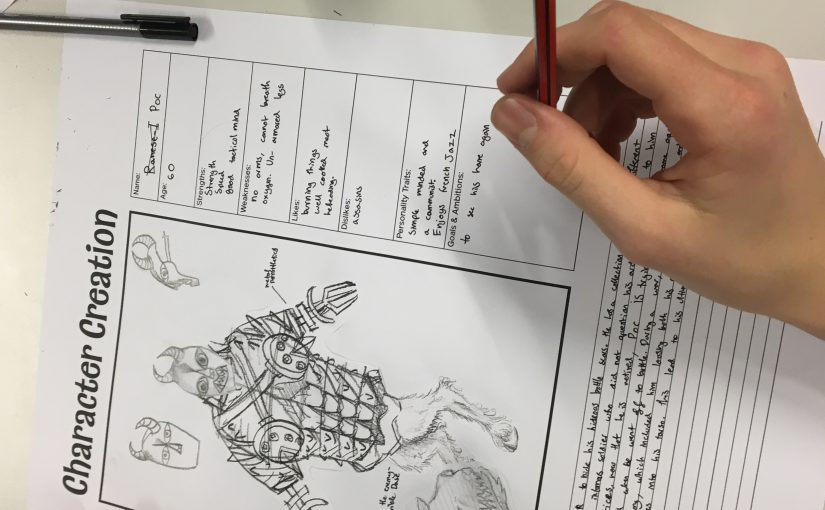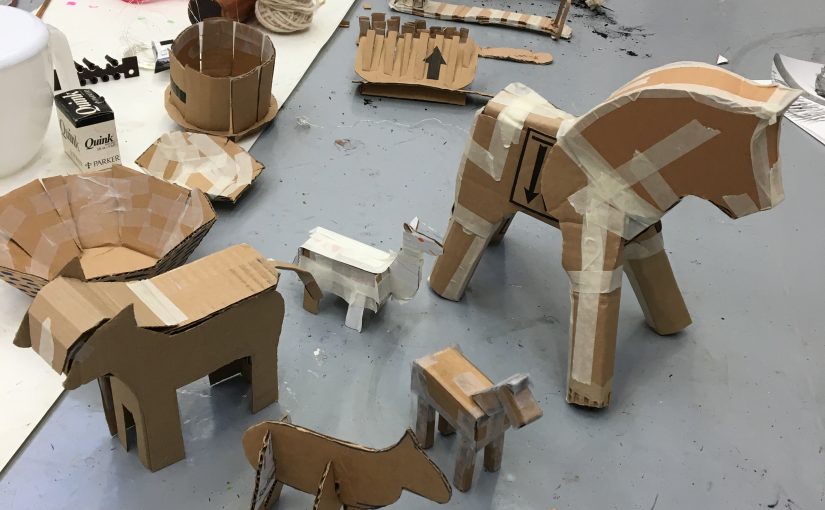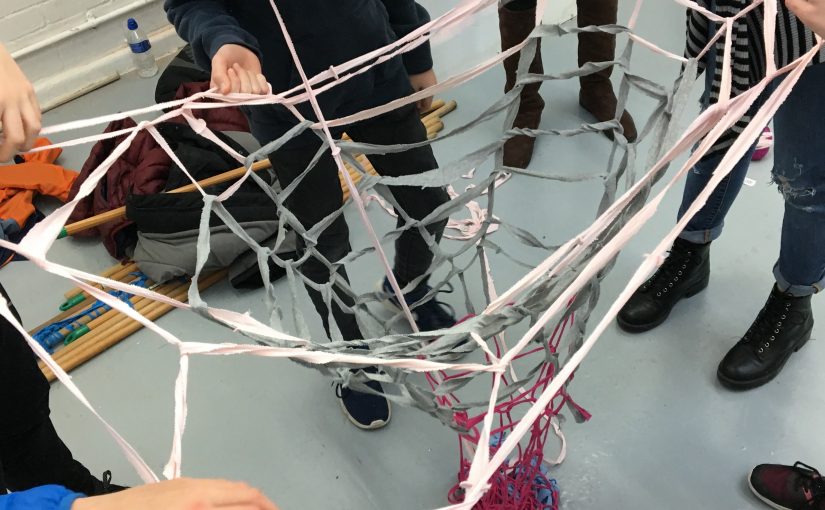This session we met Chris O’Connor, technician working with both Games Design and Art and Graphic Arts. The workshop was supported by third year Games Design and Art student Sam.
These workshops were focusing on Games Design and Art; at WSA this might include developing narratives, character and environment as well as coding, for computer, board or card games. One example of how broadly the definition of ‘games’ are taken was WSA students working on a brief to create a mini golf computer game, which they then translated into a physical game, including the windmills!
We got started with a version of ‘exquisite corpse’ where everyone drew at least two heads, torsos, and sets of arms and legs – there were no restrictions so we had humans, monsters, animals, sea creatures, fantastical beasts and the rest…
These were then cut out and swapped around so everyone could create their own ‘Frankenstein’ style character. The drawing skills in the group were fantastic, showing how well they could draw forms from memory although there were resources to reference if needed. Mixing up the body parts stopped anyone from sticking to preconceived ideas around what a games character ‘should’ look like.
These assembled characters were then given names, personality traits, skills and a back story. The group got really into this and needed no encouragement in developing wild narratives around their creations.
Adam Procter, Programme Leader – BA (Hons) Games Design & Art also visited us during the session to speak with the group about the course and took us to trial some games developed by first year students. It was great to see ‘work in progress’ to get an idea of what kinds of computer games were being designed and how they tested out basic prototype ideas to get player feedback. The WSA students had also included their inspiration and ideas of how graphics could be developed. The Saturday Club members enjoyed seeing these games in their raw state, getting an insight in to how the slick finished product we experience as games players starts out.
Check out the free coding software to start developing your own games Chris mentioned here: https://unity3d.com/



